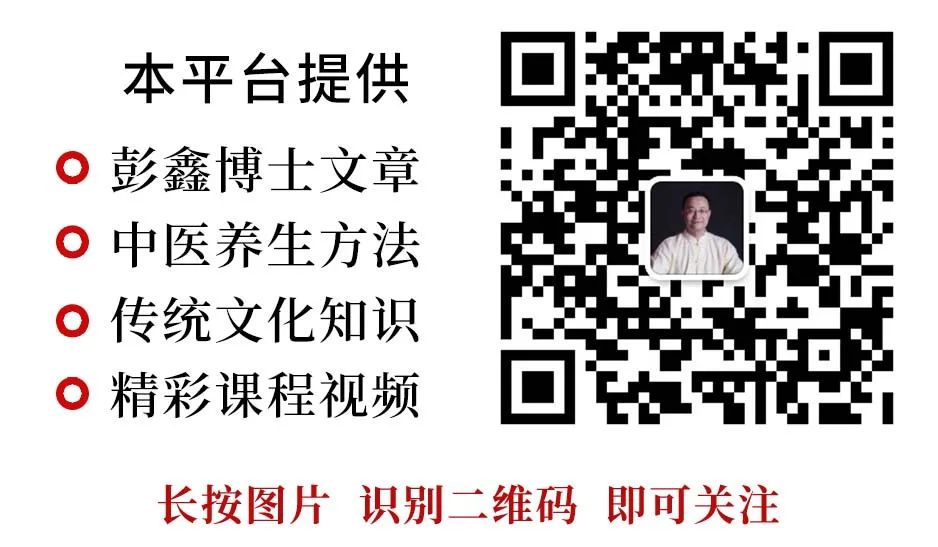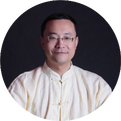↑Click the card above to follow me↑
This article is: Dr. Peng’s lecture series on the “Huangdi Neijing” (with audio)-Essence Part- No. 560.(More exciting content is continuously updated…)
“The complexion is seen from above, below, left, and right, each has its significance. If the color is light, decoction is the treatment, and recovery is in ten days. If the color is deep, herbal medicine is the treatment, and recovery is in twenty-one days. If the color is very deep, medicinal wine is the treatment, and recovery is in a hundred days. If the complexion is pale and the face is emaciated, it cannot be treated, and death will occur in a hundred days. If the pulse is short and the breath is absent, death is imminent; the disease is severe and deficient. The complexion is seen from above, below, left, and right, each has its significance. The upper part indicates rebellion, the lower part indicates compliance; for women, the right is rebellion, the left is compliance; for men, the left is rebellion, the right is compliance. In the case of excess Yang, death occurs; in the case of excess Yin, death occurs. The treatment lies in balancing the opposing forces, which is a matter of great importance, and requires careful consideration.” — “Huangdi Neijing: Yuban Lun Yao”
Hello, dear listeners, I am Dr. Peng Xin of Traditional Chinese Medicine. Today we continue to explain the “Huangdi Neijing: Suwen: Yuban Lun Yao, Chapter 15”. Let’s first look at the original text: “The complexion is seen from above, below, left, and right, each has its significance. If the color is light, decoction is the treatment, and recovery is in ten days. If the color is deep, herbal medicine is the treatment, and recovery is in twenty-one days. If the color is very deep, medicinal wine is the treatment, and recovery is in a hundred days. If the complexion is pale and the face is emaciated, it cannot be treated, and death will occur in a hundred days. If the pulse is short and the breath is absent, death is imminent; the disease is severe and deficient. The complexion is seen from above, below, left, and right, each has its significance. The upper part indicates rebellion, the lower part indicates compliance; for women, the right is rebellion, the left is compliance; for men, the left is rebellion, the right is compliance. In the case of excess Yang, death occurs; in the case of excess Yin, death occurs. The treatment lies in balancing the opposing forces, which is a matter of great importance, and requires careful consideration.”This passage is a bit long, but the meaning is coherent. It discusses color diagnosis, which is the method of assessing the body’s pathological conditions through complexion, determining severity and treatment, and identifying critical conditions, etc. Let’s go through it from beginning to end.
“The complexion is seen from above, below, left, and right,”“complexion” refers to the changes in facial color.“each has its significance,” means we examine the patient’s complexion by observing the different areas and their respective depths and directions. For example, “if the color is light, decoction is the treatment,” indicates that for a lighter condition, we use decoctions made from grains for adjustment. Decoction refers to the alcoholic beverages brewed from grains. (Please follow WeChat:pengxinboshi) The lighter ones are decoctions, while the thicker ones are medicinal wines. For lighter conditions, we use decoctions for treatment, and no medication is needed, recovery can occur in about ten days, referred to as “ten days already,” where “already” means healed.
“If the color is deep, herbal medicine is the treatment, and recovery is in twenty-one days.” If the color is particularly deep, indicating a severe condition, herbal medicine must be used for treatment, and recovery will take about twenty-one days. Here, the character “齐” (qi) actually means “剂” (ji), referring to the herbal preparation, which is the formulation of herbal medicine into a decoction for consumption, hence “herbal medicine is the treatment.”
Continuing, “if the color is very deep, medicinal wine is the treatment, and recovery is in a hundred days.” If the condition worsens, medicinal wine, which is a thick alcoholic beverage brewed from grains, must be used in conjunction with herbs. Ancient physicians believed that medicinal wine should be used for treatment, and recovery would take about a hundred days.
At this point, I want to add that since medicinal wine is used to extract medicinal properties, it can be effective in treating certain diseases, especially conditions like rheumatism and rheumatoid arthritis. However, everyone should note thatmedicinal wine should not be consumed long-term or in large quantities.Alcohol contains ethanol, and if the alcohol content is too high, prolonged use can lead to liver problems, even if other conditions improve. Therefore, I need to remind everyone that the medicinal wine mentioned in the “Huangdi Neijing” had a very low alcohol content, less than ten degrees. Today’s distilled spirits are over fifty degrees, which is not the same as the wine from the Han Dynasty. Many people read the “Huangdi Neijing” and think it says they can drink wine for a hundred days, but that is not a justification for drinking alcohol.
Thus, based on archaeological findings, most wines from the “Huangdi Neijing” era were below ten degrees, some even below five degrees. At that time, wine was used to brew with herbal medicine. For example, in the “Shanghan Lun,” there is a famous formula called Zhi Gan Cao Tang, which uses clear wine for brewing. The alcohol content of clear wine, according to modern standards, is below ten degrees, and this is the type of medicinal wine that can be referenced. But it should not be high-proof alcohol, as alcohol can harm the body.According to modern medicine, extensive research has shown that it is not suitable to consume large amounts of alcohol long-term. Therefore, I remind everyone that for deeper conditions, medicinal wine should be used for treatment.
Next, “if the complexion is pale and the face is emaciated, it cannot be treated, and death will occur in a hundred days.” Pale complexion refers to a withered and emaciated appearance, indicating that treatment is futile. What happens if it cannot be treated? The original text of the “Huangdi Neijing” means that in a hundred days, the person will die. In modern terms, this means that after a hundred days, the person will enter a critical condition, with a very poor prognosis. “If the pulse is short and the breath is absent, death is imminent.” In addition, there is a condition called “short pulse and absent breath,” indicating that the pulse is very weak, and Yang energy is depleted; in this case, death is certain, and critical conditions will arise.
Here, we emphasize that the statements in the “Huangdi Neijing” about certain death and days to death should not be taken literally. In modern times, many people would not die; they would end up in an intensive care unit.Modern medicine has many resuscitation methods, and after treatment, it is possible to restore Yang energy and save the patient.Many critical conditions we see today can be saved. Unlike in the era of the “Huangdi Neijing,” there were no intravenous pathways, and once a person lost a lot of blood, they could not be saved, leading to shock and low blood pressure. However, now we can open intravenous pathways, whether through fluid infusion, pressure elevation, or blood transfusion, in any case, we can save them. Therefore, do not limit yourself to the text; always relate it to actual clinical practice.
Another condition is called “severe heat disease leading to death.” This refers to warm diseases, where the righteous Qi is severely deficient. At this time, it is also easy to lead to critical conditions. Warm diseases in ancient times were considered severe; some belong to epidemic or infectious diseases, while others are classified as warm diseases. Warm diseases can deplete the body’s righteous Qi, leading to significant Qi deficiency. Once Qi is deficient, it is easy to develop critical conditions, which is what is meant by “severe heat disease leading to death.” (To be continued)
This article is: Dr. Peng’s lecture series on the “Huangdi Neijing” (with audio) – Essence Part – No. 560. (More exciting content is continuously updated…)
Disclaimer: This article is a health knowledge sharing. The medications, prescriptions, acupuncture, and various treatments and health methods mentioned in the text should be applied under the guidance of a professional physician, and should not be used independently. We are not responsible for any issues arising from improper use.
Copyright Statement: This article is authored by Peng Xin, this is an original article, and reproduction or citation without permission is prohibited.
(Copyright belongs to the original author, and all legal rights are reserved)
Recommended Reading
Follow the “Dr. Peng Xin TCM Studio” Public WeChat Account, reply with the number 2022 to view the collection of popular readings.
[With audio] Dr. Peng Xin explains the “Moxibustion Health Preservation” series of courses
[With audio] Dr. Peng Xin discusses “Health Preservation in the Twenty-Four Solar Terms”
[With audio] Dr. Peng Xin discusses the essence of the “Huangdi Neijing” series
[State Council Information Office] Dr. Peng Xin: The ultimate integration of Chinese and Western medicine lies in the clinical front line
[Tsinghua University] Dr. Peng Xin’s public lecture – Modern Insights from Pengzu’s Health Preservation Philosophy
[Baduanjin Complete Collection] Health Preservation Techniques – Dr. Peng Xin presents you with a gift
One important cause of obesity (includes solutions)
“Winter Solstice” signifies the birth of Yang; the correct health preservation method is as follows
[Video] Vortex Gathering Energy: Method of Raising Clear and Lowering Turbid
[Health Preservation] Two Blood Nourishing Formulas Suitable for Women
[Exciting Recommendations] Since eating vegetarian is so good, why is your body still so poor?
Dr. Peng Xin TCM Studio
WeChat Public Platform: pengxinboshi

Official website: www.pengxinboshi.com
Sina Weibo: @Dr. Peng Xin
Tencent Weibo: @Dr. Peng Xin
Appointment and Lecture Invitation Methods for Dr. Peng Xin
↓ ↓ ↓
Appointment Method: Click here for details

